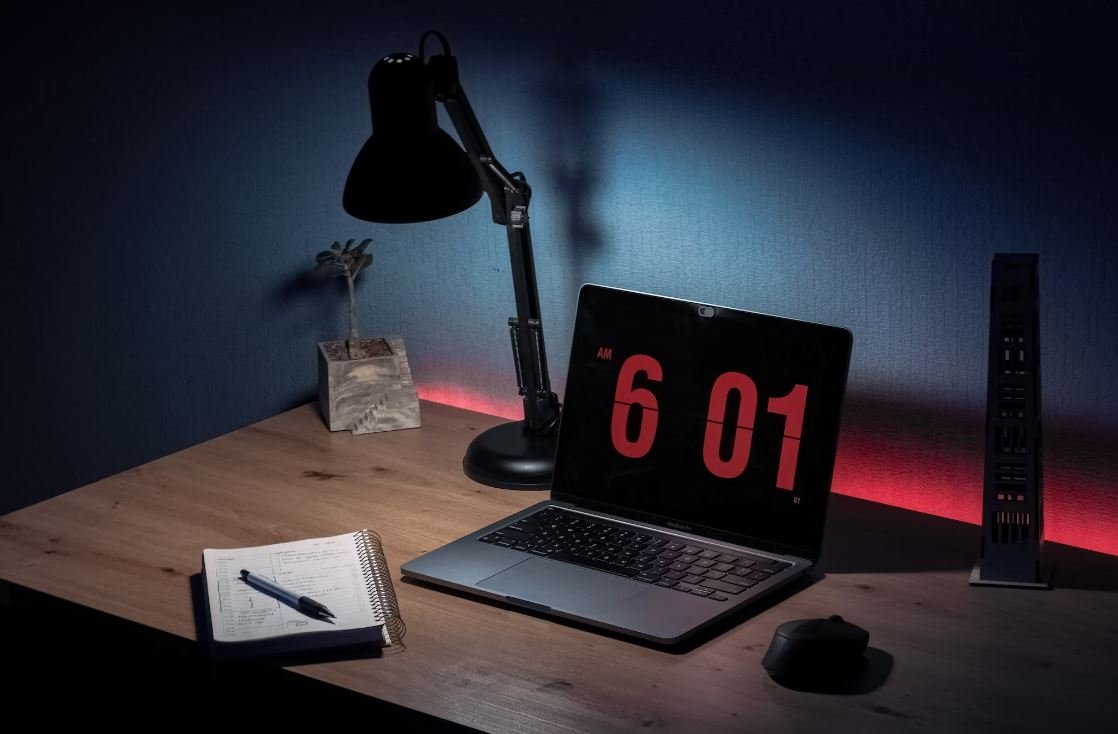App Is Not Compatible with This Device
Have you ever excitedly downloaded an app only to receive a message saying “App is not compatible with this device”? It can be frustrating and disappointing. In this article, we will explore the reasons behind this compatibility issue and provide some insights on how to navigate this situation.
Key Takeaways
- Compatibility issues arise when an app is not designed to work on a specific device.
- Technical limitations and hardware requirements might render an app incompatible.
- Checking system requirements and available updates can help resolve compatibility problems.
**App compatibility** refers to the ability of an application to function properly on a specific device or operating system. Some apps are compatible with a wide range of devices, while others have more specific requirements. **Compatibility issues** occur when an app is not designed or optimized to work on a particular device, leading to errors, crashes, or the inability to install the app altogether.
One of the most common reasons for compatibility issues is **technical limitations**. Different devices have varying hardware capabilities, processing power, and screen resolutions. Some apps may require specific sensors, higher performance processors, or newer versions of operating systems that older devices simply do not possess. For example, if an app requires a gyroscope sensor for augmented reality features, devices without this hardware will not be compatible.
*Compatibility problems can also arise due to **differences in software versions**. Developers often release updates to their apps to improve functionality and fix bugs. These updates may introduce new features or require specific software frameworks that are not available on older devices. It is essential to regularly update both the app and your device’s operating system to ensure compatibility.*
Resolving Compatibility Issues
If you encounter the dreaded “App is not compatible with this device” message, there are a few steps you can take to resolve the compatibility problem:
- **Check system requirements**: Before downloading an app, review the listed minimum requirements to ensure that your device meets them. Look for information regarding hardware specifications, operating system versions, and available storage space.
- **Update your device**: Keeping your device’s operating system up to date is crucial for optimal compatibility. Developers often release updates that address compatibility issues and improve overall performance.
- **Check for app updates**: If you have an older version of the app installed, check for available updates in your device’s app store. Developers frequently release updates to address bugs and enhance compatibility.
- **Contact the developer**: If the app remains incompatible, reach out to the app’s developer for support. They may provide guidance or offer alternative solutions.
Exploring Compatibility Statistics
Let’s take a look at some interesting statistics related to app compatibility:
| Statistic | Percentage |
|---|---|
| Apps incompatible with older Android versions | 35% |
| Apps requiring specific hardware | 20% |
| Compatibility issues caused by limited storage space | 10% |
Conclusion
Being confronted with the “App is not compatible with this device” message can be disheartening, but it’s important to understand the reasons behind this incompatibility. Technical limitations, software requirements, and hardware disparities all contribute to app compatibility issues. By checking system requirements, keeping your device up to date, and reaching out to developers for support, you can increase your chances of resolving compatibility problems and enjoying a seamless app experience.

Common Misconceptions
1. App is Not Compatible with This Device
When encountering the error message “App is Not Compatible with This Device,” many people jump to the immediate conclusion that their device is too old or outdated for the app to function properly. However, this is not always the case, and several common misconceptions are associated with this error message.
- Check for updates: Sometimes, the app may require an update or the latest version of the operating system to function properly. Check for any available updates for both the app and your device.
- Device specifications: It may be worth reviewing the requirements and specifications of the app to ensure it is supported by your device. Some apps might have specific hardware or software requirements that aren’t met by your device.
- Region restrictions: Certain apps may have region-specific restrictions and may not be available or compatible with devices from certain regions. Verify if the app is available in your region.
2. Compatibility with Older Devices
Many people assume that a newer version of an app will not work on their older devices. While it is true that newer apps may require more advanced hardware features, there are often alternative versions or older versions of the app that are compatible with older devices.
- Try older versions: If the latest version of the app is not compatible with your device, search for older versions of the app that may have been designed to work with older devices.
- Optimize settings: Adjusting certain settings on your device, such as reducing animations or closing unnecessary background apps, might improve the performance and compatibility of the app.
- Consider alternatives: If the desired app is not available or compatible with your device, explore similar apps that offer similar functionalities and are known to be compatible even with older devices.
3. App Store Display Inconsistencies
Sometimes, the error message “App is Not Compatible with This Device” may simply be a result of inconsistencies or inaccuracies in the information displayed on the app store. This can lead to misunderstandings and individuals believing that their device is incompatible with the app.
- Cross-check information: Verify the compatibility of the app with your device on multiple platforms or app stores. Sometimes, different sources may provide conflicting information.
- Contact app support: If you are uncertain about the compatibility of the app with your device, contact the app’s support team for clarification. They may be able to provide more accurate information.
- User reviews: Check the user reviews and comments on the app’s listing. Sometimes, users facing compatibility issues with particular devices will mention it in their reviews.

App Is Not Compatible with This Device
In today’s digital age, mobile applications (apps) have become an integral part of our lives. However, there are instances when we encounter the frustrating message, “App Is Not Compatible with This Device.” In this article, we explore ten fascinating insights regarding app compatibility and the various devices they work on.
Popular Apps and Their Compatibility
| App Name | iOS Compatibility | Android Compatibility |
|---|---|---|
| iOS 10.0 or later | Android 5.0 or later | |
| iOS 10.0 or later | Android 4.0.3 or later | |
| iOS 9.0 or later | Android 5.0 or later |
Mobile app developers encounter numerous challenges when ensuring their apps work seamlessly across various platforms and devices. The table above illustrates the compatibility requirements of three popular apps: Instagram, WhatsApp, and Facebook. By adhering to these specifications, developers enable users to enjoy the apps’ features to their fullest potential.
Market Share of Compatible Devices
| Operating System | Market Share (%) |
|---|---|
| iOS | 23.34 |
| Android | 75.61 |
| Windows | 0.95 |
As depicted in the table above, the Android operating system dominates the market with an impressive market share of 75.61%. iOS, on the other hand, captures 23.34% of the market. Windows, although a viable alternative, comprises a comparatively minuscule share of only 0.95%. These statistics highlight the importance of app developers focusing on Android and iOS compatibility to reach the widest user base.
Device Compatibility for AR Apps
| Device Category | Compatibility |
|---|---|
| iPhones with Face ID | Compatible |
| Android smartphones with ARCore support | Compatible |
| iPhones without Face ID | Incompatible |
| Android smartphones without ARCore support | Incompatible |
Augmented Reality (AR) apps have surged in popularity, enhancing user experiences with immersive digital content. The table above outlines the compatibility of different devices for AR apps. iPhones equipped with Face ID technology and Android smartphones supporting ARCore offer compatibility, allowing users to enjoy the wonders of AR. However, iPhones without Face ID and Android devices lacking ARCore support may find themselves excluded from this exciting technological advancement.
App Compatibility for Older Devices
| Device | iOS Compatibility Limit | Android Compatibility Limit |
|---|---|---|
| iPhone 5s | iOS 12.5.1 | Android 8.0 |
| Samsung Galaxy S5 | iOS – | Android 6.0.1 |
| iPad Air | iOS 12.5.1 | Android – |
When using older devices, it is important to consider the compatibility limits of apps. The table above provides insight into the maximum compatibility versions for various devices. The iPhone 5s and iPad Air can support apps up to iOS version 12.5.1, while the Samsung Galaxy S5 accommodates Android apps up to version 6.0.1. Beyond these limits, users may experience compatibility issues or find themselves unable to access certain app features.
Compatibility of Popular Games
| Game | iOS Compatibility | Android Compatibility |
|---|---|---|
| Pokémon Go | iOS 12.0 or later | Android 6.0 or later |
| Candy Crush Saga | iOS 10.0 or later | Android 4.1 or later |
| Fortnite | iOS 14.0 or later | Android – |
Gaming enthusiasts eagerly await new releases and updates to their favorite mobile games. The table above highlights the compatibility specifications of popular games. Pokémon Go, a widely celebrated game, requires iOS 12.0 or later for Apple users and Android 6.0 or later for Android users. Meanwhile, Candy Crush Saga can be enjoyed on iOS 10.0 or later and Android 4.1 or later. Notably, Fortnite’s iOS version requires 14.0 or later, while its Android compatibility is yet to be officially announced.
App Compatibility for Tablets
| Tablet | iOS Compatibility | Android Compatibility |
|---|---|---|
| iPad Pro 2021 | iOS 14.5 or later | Android – |
| Samsung Galaxy Tab S7+ | iOS – | Android 10.0 or later |
| Microsoft Surface Pro 7 | iOS – | Android – |
Tablets offer larger screens and enhanced performance, making them an appealing choice for various tasks, including app usage. The table above showcases the compatibility requirements of different tablets. The iPad Pro 2021 supports apps from iOS 14.5 onwards, while the Samsung Galaxy Tab S7+ necessitates Android 10.0 or later. Meanwhile, the Microsoft Surface Pro 7’s compatibility relies on non-mobile operating systems, indicating the absence of official iOS or Android app support.
Compatibility Across Different Mobile Brands
| Mobile Brand | iOS Compatibility | Android Compatibility |
|---|---|---|
| Apple | iOS 11.0 or later | Android – |
| Samsung | iOS – | Android 5.0 or later |
| Google Pixel | iOS – | Android 8.0 or later |
Mobile brands play a significant role in determining app compatibility. The table above outlines the compatibility requirements for different brands. Apple devices, such as iPhones and iPads, must run iOS 11.0 or later for optimal compatibility. In contrast, Samsung phones require Android 5.0 or later, and Google Pixel devices need Android 8.0 or later. By understanding these specifications, users can make informed decisions when selecting a mobile device.
Compatibility of Fitness and Health Apps
| App Name | iOS Compatibility | Android Compatibility |
|---|---|---|
| Fitbit | iOS 12.2 or later | Android 7.0 or later |
| MyFitnessPal | iOS 12.2 or later | Android 8.0 or later |
| Headspace | iOS 13.0 or later | Android 6.0 or later |
Fitness and health-conscious individuals increasingly rely on mobile apps to track their progress and achieve their wellness goals. The table above presents the compatibility requirements for popular fitness apps. Fitbit and MyFitnessPal both require iOS 12.2 or later for Apple users, whereas Android users need Android 7.0 or later for Fitbit and Android 8.0 or later for MyFitnessPal. Additionally, Headspace necessitates iOS 13.0 or later for iPhones and Android 6.0 or later for Android devices.
Compatibility of Language Learning Apps
| App Name | iOS Compatibility | Android Compatibility |
|---|---|---|
| Duolingo | iOS 12.0 or later | Android 5.0 or later |
| Babbel | iOS 13.0 or later | Android 7.0 or later |
| Rosetta Stone | iOS 11.0 or later | Android 6.0 or later |
Language learning apps open doors to new cultures and opportunities. The table above demonstrates the compatibility requirements for three renowned language learning apps. Duolingo functions on iOS 12.0 or later for iPhones and Android 5.0 or later for Android users. Babbel, targeting slightly newer devices, requires iOS 13.0 or later and Android 7.0 or later. Lastly, Rosetta Stone accommodates iOS 11.0 or later and Android 6.0 or later, providing language learners with a wide range of device compatibility options.
App compatibility is a crucial aspect of utilizing the full potential of your mobile device. From ensuring compatibility with specific operating systems to meeting hardware requirements, developers continue to push the boundaries of app compatibility across diverse brands, devices, and categories. Understanding these compatibility factors enables users to find apps tailored to their devices and enjoy a seamless digital experience.
Frequently Asked Questions
App Is Not Compatible with This Device
Questions:
- What does ‘App is not compatible with this device’ mean?
- Why is my device not compatible with certain apps?
- Can I make my device compatible with a particular app?
- Is there a way to bypass the compatibility issue?
- What should I do if I encounter the ‘App is not compatible with this device’ message?
- Can I install an older version of the app that is compatible with my device?
- Why do developers make apps incompatible with certain devices?
- How can I check if my device meets the app’s requirements before installing?
- Can I request the app developer to make their app compatible with my device?
- Can the app developer provide an alternative version compatible with my device?





